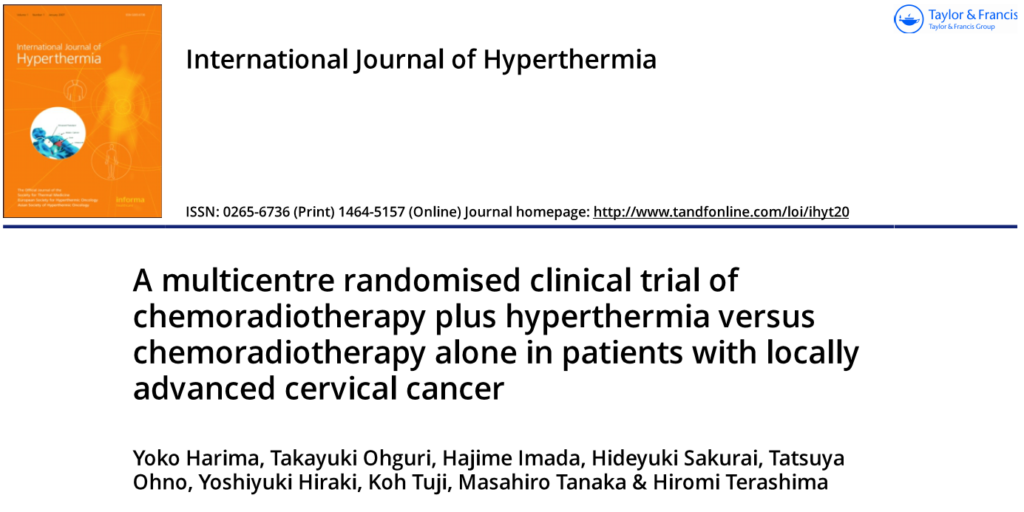WIELOŚRODKOWE RANDOMIZOWANIE BADANIE KLINICZNE Z CHEMIOTERAPIĄ I HIPERTERMIĄ W PORÓWNANIU DO SAMEJ CHEMIOTERAPII U PACJENTEK Z MIEJSCOWO ZAAWANSOWANYM RAKIEM SZYJKI MACICY
tytuł oryg.: A multicentre randomised clinical trial of chemoradiotherapy plus hyperthermia versus chemoradiotherapy alone in patients with locally advanced cervical cancer
Wydawnictwo: International Journal of Hyperthermia
Autor główny: Yoko Harima
Pozostali autorzy: Takayuki Ohguri, Hajime Imada, Hideyuki Sakurai, Tatsuya Ohno, Yoshiyuki Hiraki, Koh Tuji, Masahiro Tanaka & Hiromi Terashima
Data: 2016-09-11

DOI: 10.1080/02656736.2016.1213430
Język publikacji: angielski
Klasa publikacji: Badanie kliniczne
Rodzaj badania: Randomizowane, wieloośrodkowe
Liczba pacjentów: 101
Rodzaj HT: LRHT Capacitive
Rodzaj HT opis: HT miejscowa, głęboka, pojemnościowa
Aparatura: Thermotron RF-8
Jednostka chorobowa: Rak szyjki macicy miejscowo zaawansowany
Symbol Jednostki chorobowej: LACC
Stage: IIA-IVA
Typ skojarzenia HT stosowany w badaniu: HT+RT+CT
Rodzaj CT: Cisplatin
Abstract. Background and purpose: To evaluate the effectiveness of whole-pelvic hyperthermia (HT) added to standard chemoradiotherapy (CRT) in locally advanced cervical cancer (CC), by investigating the clinical response and survival of patients treated with cisplatin-based CRT vs. CRT with HT (CRTþHT).
Materials and methods: This study was conducted at five hospitals in Japan between September 2001 and March 2015 in patients with the International Federation of Gynecology and Obstetrics stage IB (bulky)–IVA CC undergoing definitive CRT. After giving a written informed consent, patients were randomly allocated to two treatment groups: CRT and CRTþHT group. Overall survival (OS), diseasefree survival (DFS), local relapse-free survival (LRFS), complete response (CR) rate and tolerability were evaluated.
Results: In total, 101 patients were treated. Patient characteristics, total dose of cisplatin and radiotherapy were similar for both groups. Although not statistically significant, the 5-year OS, DFS and LRFS in the CRTþHT group (77.8%, 70.8% and 80.1%, respectively) were better than those in the CRT group (64.8%, 60.6% and 71.0%, respectively). CR was significantly more likely to be achieved in patients in the CRTþHT group than in the CRT group (88% vs. 77.6%; adjusted odds ratio, 3.993; 95% confidence interval, 1.018–15.67; p¼.047). CRTþHT was well tolerated and caused no additional acute or longterm toxicity compared with CRT alone.
Conclusions: HT combined with CRT improved the CR rate of CRT in patients with locally advanced CC, however, could not improve survival outcomes. Further studies in larger samples are warranted.
Potrzebujesz więcej danych o artykule? Skontaktuj się z PTHO droga mailową.